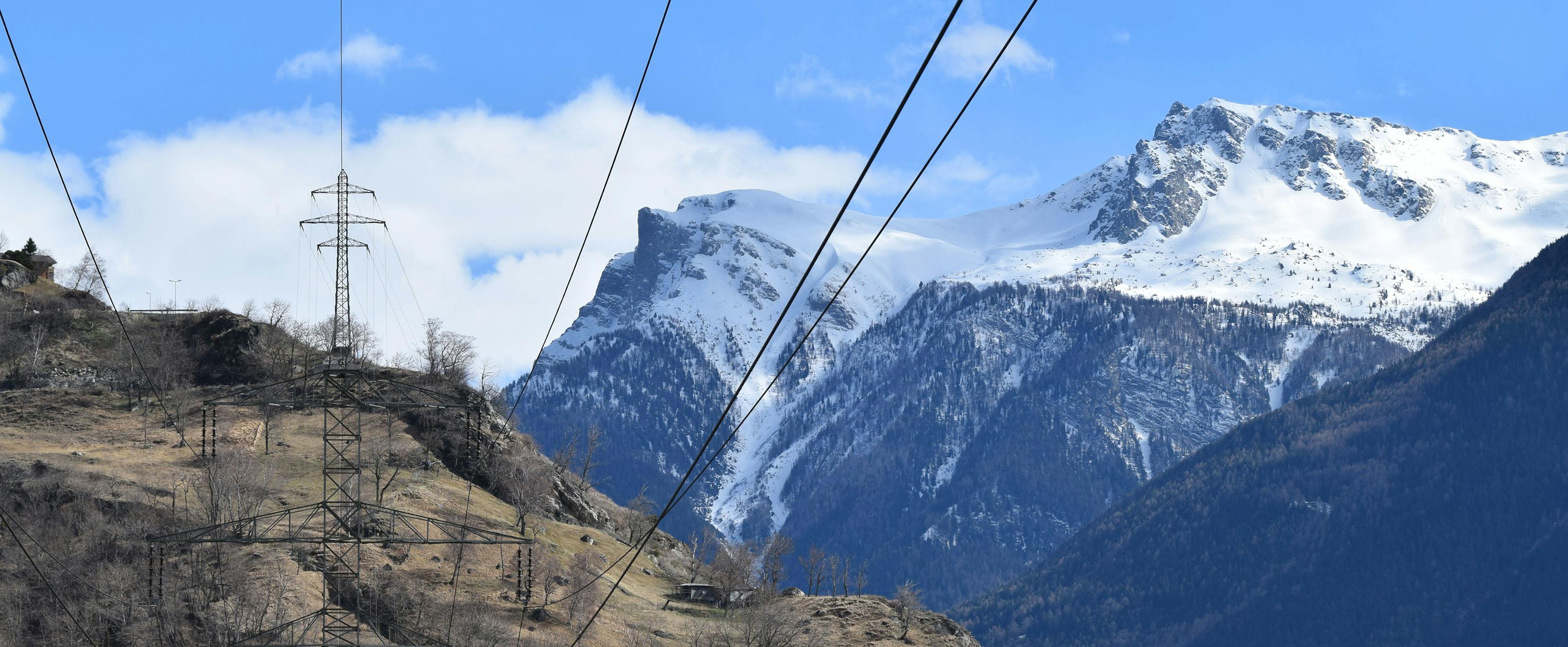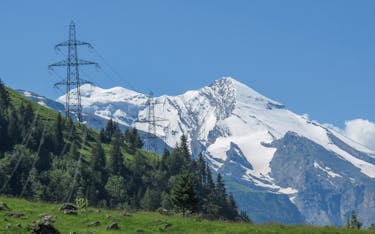People & environment
The construction of large-scale infrastructure such as an extra-high-voltage line will impact the landscape and environment. For Swissgrid, it is a matter of course to compensate for such an impact on the landscape. To this end, Swissgrid implements various environmental protection measures. In addition, the existing line will be dismantled which currently passes right through villages in the area of Leuk-Susten, Niedergampel, Gampel, Raron, Steg and Baltschieder and Brig.
Landscape
The new extra-high-voltage line will be built on the shaded southern slope further away from the residential areas. There, it will pass through the western part at altitudes ranging from 600 metres to 1400 metres above sea level and up to 1200 metres above sea level in the eastern part, avoiding higher, more exposed conditions. The line will pass through a number of valleys and trenches, for example Illgraben valley, Nanztal valley and Vispertal valley as well as Saltinaschlucht gorge. Additional visual impairments will occur in the area of Turtmann and in the valley traverse Visp/Stalden.
The dismantling of existing lines will provide significant relief for residential areas and leisure facilities. In the area around Leuk-Susten, Niedergampel, Gampel, Raron, Steg and Baltschieder and Brig, this line leads right through villages, restricting their possibilities in settlement developments. In Visp, the residential area on the west-facing slope, in the south and on the east-facing slope will be bypassed. Due to the steep inclines, the new line will pass above the village and will be more visible from the surrounding hiking paths than from the centre of the village. To the south of Visp, the new line will pass through Vispertal valley close to the new motorway bridge and is especially visible from Visperterminen.
Due to the bundling of the new line with the existing 220-kV line Stalden – Visp – Mörel, the burden on area around Visp to Bitsch will be reduced. In Visp, the existing line Stalden – Lalden will be dismantled from the splitter mast in Lalden, via Lonza-Werke to the intersection with the new 380-kV line.
Environmental protection
Shortly after the substation Chippis, the line passes through the protected Pfynwald nature park. For this reason, the line route will pass along the foot of the hill with as little intrusion as possible. In the Pfynwald forest, the two lines Chippis – Mörel and Chippis – Stalden will be bundled on the same route. Lines with lower voltage levels will be laid or bundled as well. Overall, the burden on this unique pine forest will be significantly reduced compared to the current situation.
The alternative measures for the replacement of the forest clearance will take place in the Pfyn-Ginges nature park. The canton is still in the process of defining the alternative measures required for the clearance easements.
Electromagnetic fields
The burden on the population will be reduced by the greater distance of the line to the residential area. Electromagnetic radiation will either meet or be well below the limit of 1 μT. The noise pollution will be significantly reduced through the use of new technology and bundles of two..
Natural hazards
The construction approval is subject to strict conditions. One of these conditions stipulates that a review will be performed together with canton geologists and engineering offices to determine whether protective measures are required for the masts. Possible natural hazards are landslides, mudslides, avalanches or rock falls. To counter these natural hazards in hazardous areas, the masts will be secured with reinforced mast foundations and anchors, nets or earth banks, for example. In coordination with the authorities, Swissgrid will verify whether protective measures for avalanches and snow slides are necessary.




















